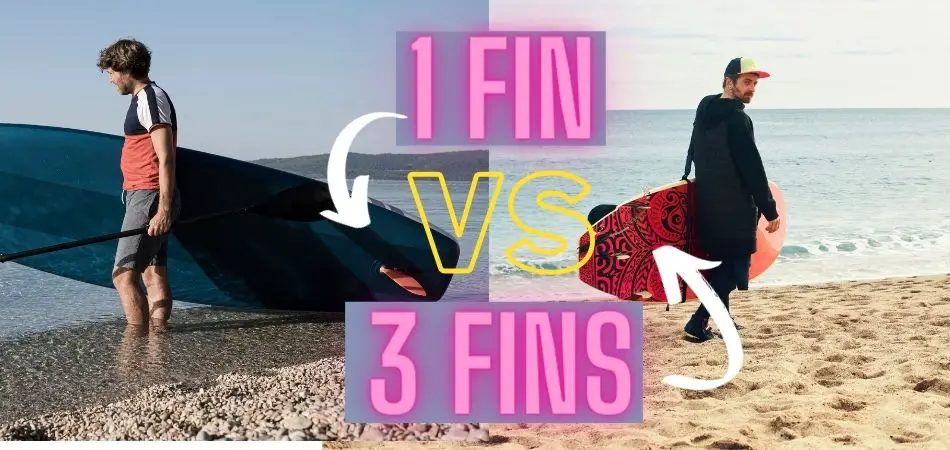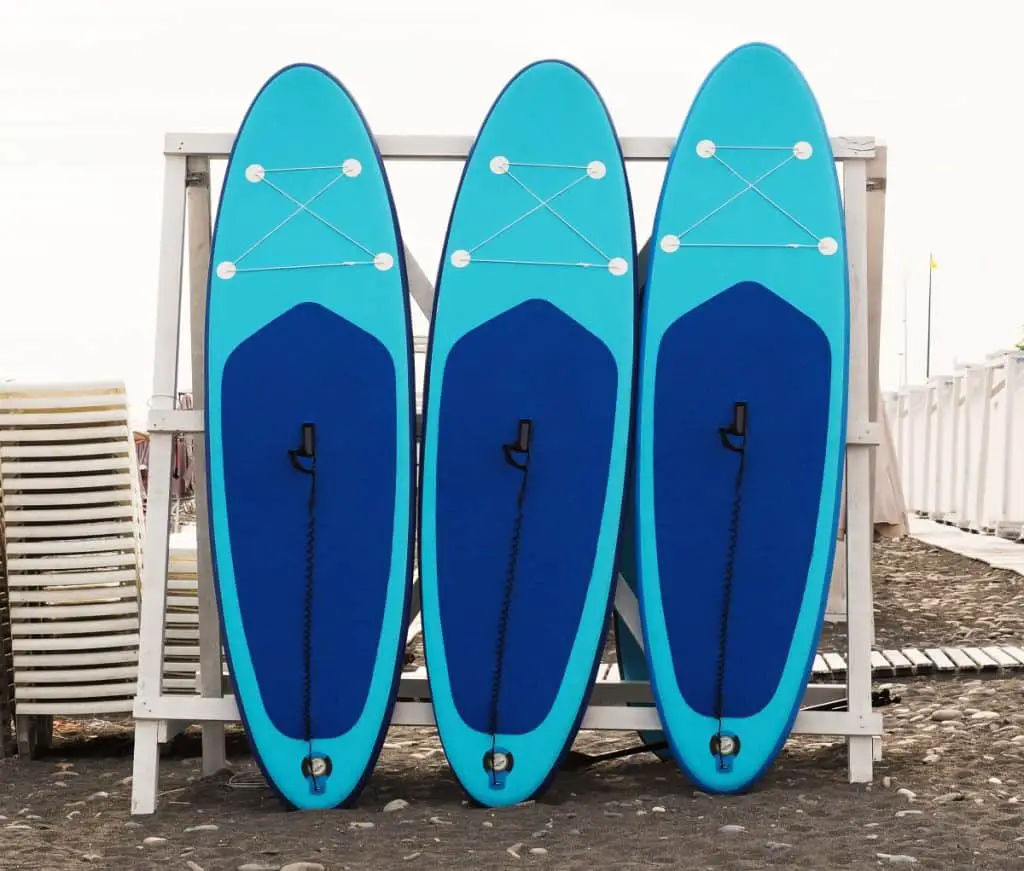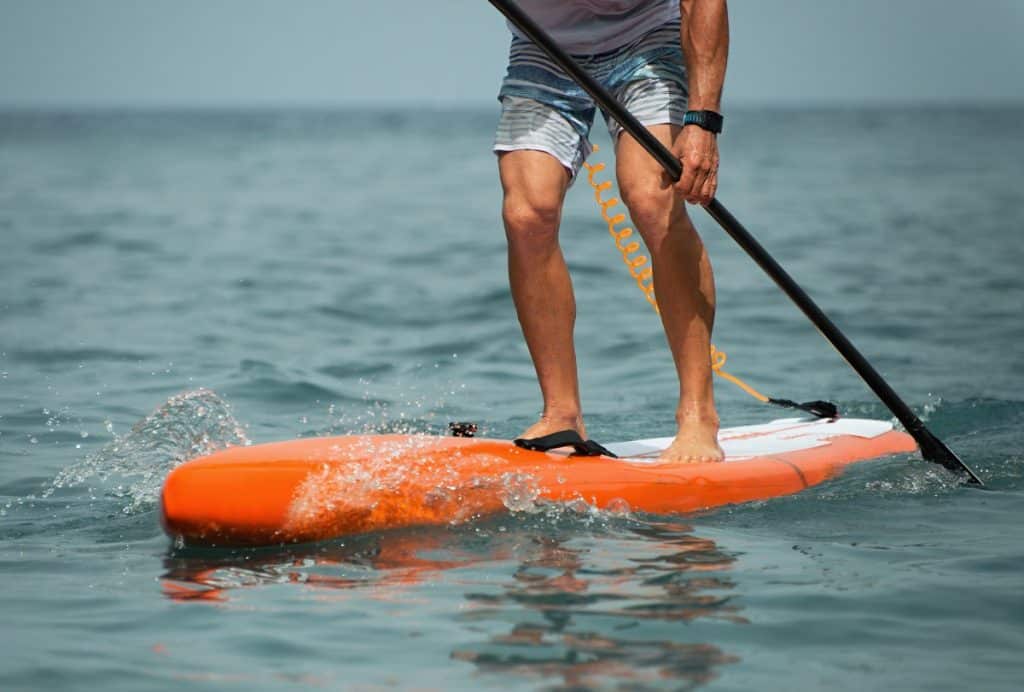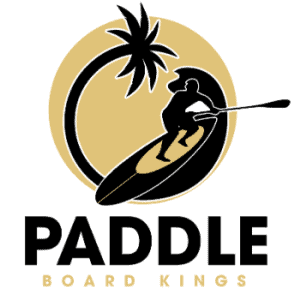
Paddleboarding is a blast during the long, hot summer days. However, you might be wondering, does it matter whether I buy a 1 or 3 fin board, and what’s the difference between those types? Here’s what you ought to know!
Paddleboards with 1 fin are generally used for flatwater paddling. Single fins provide good tracking and little drag, making it easy to cut through smooth water. 3 fin paddleboards are sometimes referred to as thrusters. This design enables the paddleboard to handle well on flat water or surf.
Still not sure what type you need? Here are a few tips that might help you to decide!
Characteristics of a 1 Fin
The Purpose of Fins
Fins on a paddleboard are meant to give the board good tracking abilities as well as better balance. Larger fins are better for stability and straighter tracking, however, smaller fins have much better maneuverability. The nice thing about most newer paddleboards is their fin versatility. Most fins are removable and can be interchanged with different ones. This way, you get to experience the best of both worlds.
Fins are also meant to decrease drag on the paddleboard. Any object in a body of water will create drag on every single side, but adding a thin fin will limit the drag to the sides and not the front. This will enable the board to move faster and more smoothly through the water.
The single fin setup is one of several different configurations. As mentioned before, single fin paddleboards are designed for excellent maneuverability and fast movement. The speed and type of maneuverability highly depend on how you position the fin. A single fin is usually fitted with a screw and nut in the designated fin box.
There is often a canal that is designed to let the fin slide forward towards the nose or backward towards the rear. Putting the fin near the tail of the board will allow it to track better. This is an ideal setup for racing, flatwater paddling, or touring. Sliding the fin towards the nose of the paddleboard will make it easier to surf or paddle on white water.
Characteristics of a 3 Fin

A paddleboard with the 3 fin setup is oftentimes referred to as a thruster or a 2+1. Like surfboards, they have 3 fins of roughly the same size. The fins are designed to give the board more stability, generally when surfing or tracking. The three fins are located on the sides and center of the paddleboard’s tail.
They provide added maneuverability and stability on rough water, though they can also make for good tracking on flatwater. Though a single fin board can handle fine in the surf or white water, a thruster is generally recommended. This is primarily because it has added stability and is a tad more reliable on rough water.
Paddleboard Types
In addition to the 1 and 3 fin paddleboards, there are also 2 and 4 fin paddleboards. If a 2 fin is what you are after, all you need to do is remove the center fin of your thruster. The 2 fins on the sides are often called side bites. The 2 fin setup became a common style when paddleboards began to get smaller. 2 fins are often used for stand-up paddleboard (SUP) surfing, often when the waters are rougher than usual. They are definitely worth a mention, but they are not nearly as common as the 1 and 3s.
4 fin boards are not typically used by any except the professionals. The 4th fin generates an additional, stronger drive that is often hard for most people to control. It does, however, give the rider the ability to hold a higher line above the wave’s crest.
4 fin paddleboards (also called quads) vary, sometimes having all 4 fins in the rear and sometimes having them equally distributed between the nose and the tail. For those who know how to handle a 4 fin, it can actually give them an advantage. This is primarily because it has a wider template that covers more space. The smaller the rear fins are, the more pivot you will have and the looser it becomes.
Epoxy Paddleboards
In addition to having different types of fin setups, there are three main different types of paddleboards. The first is the epoxy paddleboard which is the traditional hard top paddleboard. This type is constructed with several layers of EPS foam, fiberglass, and epoxy resin to prevent getting dings in the board.
The use of the EPS foam makes the board lightweight but adequately durable. Epoxy boards are very agile on the water and their shape makes for extra-smooth gliding. This makes the epoxy board ideal for long-distance paddling. The agility and smooth gliding are probably the biggest perks to using an epoxy board. Additionally, epoxy boards provide optimal performance and are a fantastic choice for SUP surfing, long-distance expeditions, and racing.
Unfortunately, epoxy boards can be terribly difficult to transport since they are not the least bit flexible. To take them to different places, you will typically need a truck or roof racks to make it work. They are coated in epoxy resin to prevent dings and to a degree, this works. However, epoxy boards are typically the least durable of the three types of paddleboards.

Inflatable Paddleboards
Inflatable paddleboards can easily be considered the most popular paddleboard type nowadays. Because they can be inflated and deflated, these paddleboards are very convenient to transport to and from the beach. Fortunately, however, they are just as rigid and sturdy as an epoxy board when pumped to the proper PSI. They are extremely stable, which makes them an ideal choice for novice paddleboarders.
Additionally, they are fairly durable. Because they can be deflated and folded up, dropping or scratching them won’t typically do a whole lot of damage as opposed to epoxy boards. They are also more affordable. The only downside is the pumping of the boards. It can take a while and can often be difficult to reach the proper level.
Soft Top Paddleboards
Like the soft-top surfboard, the soft-top paddleboard has a comfortable, spongy surface. Despite their sponginess, however, they are just as durable and sturdy as the other two types. With its density foam core and resin-coated deck, the soft-top is a great option.
One of the biggest perks is the fact that soft-tops are the most affordable and easy to find of the three. Like the inflatables, they are a good choice for beginners and especially young children. This is primarily because falling on the deck of the board will not hurt, thanks to its spongy surface.
On the downside, soft-tops are much heavier than and do not perform as well as epoxy and inflatable boards. They are also very limited in their design. Inflatable and epoxy boards often come in different shapes and styles, but the soft-tops do not.
